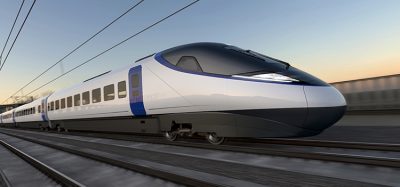Reaching 100 kilometres and beyond
Posted: 6 February 2007 | | No comments yet
The Gotthard Base Tunnel construction work is progressing well. In the last year, almost 18 of the total 153 kilometres of shafts, passages and tunnels were excavated. At the end of 2006, more than 100 kilometres, or approximately two-thirds, of the tunnel system under the Gotthard had already been cut. In summer 2006, work also started on the Ceneri Base Tunnel.
The Gotthard Base Tunnel construction work is progressing well. In the last year, almost 18 of the total 153 kilometres of shafts, passages and tunnels were excavated. At the end of 2006, more than 100 kilometres, or approximately two-thirds, of the tunnel system under the Gotthard had already been cut. In summer 2006, work also started on the Ceneri Base Tunnel.
The Gotthard Base Tunnel construction work is progressing well. In the last year, almost 18 of the total 153 kilometres of shafts, passages and tunnels were excavated. At the end of 2006, more than 100 kilometres, or approximately two-thirds, of the tunnel system under the Gotthard had already been cut. In summer 2006, work also started on the Ceneri Base Tunnel.
The concept of this high-speed flat rail link with its three base tunnels under the Zimmerberg, brings a quantum leap to the north-south traffic on the Gotthard route. The new rail link will create much shorter journey times for passenger traffic, while freight trains will be twice as long and heavy as today. Transporting the same quantity of goods will require fewer locomotives and people, as well as less energy. The greatest possible transfer of heavy goods vehicles from road to rail is, however, not only desirable for economic reasons – the new Gotthard Rail Link is also Switzerland’s most far-reaching environmental project ever.
Already today, construction of the new Gotthard Rail Link is pushing boundaries and uniting cultural and linguistic regions. The complex project calls for interdisciplinary collaboration between specialists from various technical disciplines that include engineers, planners, geologists and surveyors, as well as machine operators and miners. Although the people working on the construction sites are from different cultures and professions, they all have one common goal: every day, to win a few more metres from the mountains – and to complete construction of the Gotthard Base Tunnel on schedule.
Bodio-Faido: high-precision breakthrough
On 6 September 2006, AlpTransit Gotthard Ltd passed another milestone on this journey. After driving some 13.5km and almost four years after starting out from Bodio, the first tunnel boring machine reached the multifunction station at Faido. The breakthrough took place shortly after midday with a minimal horizontal deviation of approximately 5cm and a vertical deviation of approximately 2cm. More than 1,000 guests watched as tunnellers from Bodio and Faido shook hands. At the end of October 2006, the tunnel boring machine in the west tunnel also arrived in the multifunction station at Faido. At the time of writing, both tunnel boring machines are being overhauled and modified in the multifunction station. In June 2007, the machines will begin cutting the approximately 11-kilometre-long drive towards Sedrun.
Sedrun: driving through squeezing rock
In the Sedrun section, construction work in the squeezing rock zone of the Tavetsch Intermediate Massif North is progressing well. Over the last few months, the new method with deformable steel ring inserts has proved itself. Of the approximately 1,200 metres of the problematical stretch, more than two-thirds have been successfully overcome. Driving is also continuing to the south. The Tavetsch Intermediate Massif and the Urseren Garvera zone were traversed without major problems. At the time of writing, the tunnellers are approximately 1,300 metres below the area of the Nalps reservoir. When a water ingress of around eight litres per second was encountered, four exploratory bores were made to investigate the water-bearing zone. Based on the results, AlpTransit Gotthard Ltd decided to seal the zone with injections. The injection work itself started at the end of November 2006 and will take approximately two months from then. In the east tunnel, where no water ingress has occurred, driving work is continuing without disruption. On 23 October 2006, work also began on the preliminary investments for Porta Alpina. Specifically, four passenger waiting areas are being excavated.
Amsteg: tunnel boring machines reach destination
At the Amsteg construction site on 27 May 2003, mechanical driving of the Gotthard Base Tunnel on the north side of the Alps began. In the east tunnel, in a ceremony that will be remembered by all involved, Tunnel Boring Machine Gabi I was started up. On 11 August 2003, TBM Gabi II started cutting in the west tunnel. On their way from Amsteg to Sedrun, the two tunnel boring machines together had to cut more than 10,700 metres of the Gotthard Base Tunnel. In the east tunnel, Gabi I completed this stretch more or less without major problems or interruptions. With Gabi II it was different. In the west tunnel of the Amsteg section, the tunnel boring machine made no progress for about five months because of a geological interference zone with crumbly rock and water. It required hard work and a major technical effort for the tunnellers to release the cutting head of the gigantic boring machine. Gabi II resumed driving towards Sedrun in November 2005.
In the meantime, both tunnel boring machines have reached their destination, Gabi I in the east tunnel in mid-June 2006 and Gabi II in the west tunnel in mid-October 2006. In the last few weeks and months, the two huge boring machines have been completely dismantled underground, and their individual parts transported out of the tunnel by the service train.
Erstfeld: objection causes delay
It was planned that the two tunnel boring machines would then be deployed at the Erstfeld construction site. The work on the Erstfeld-Amsteg section involves driving the two single-track tunnels through the 7.8-kilometers-long section from Erstfeld to Amsteg. However, in the autumn of 2006, the Swiss Federal Appeals Commission for Public Procurement accepted for the second time the objection of a tenderer the award of the Erstfeld tunnel lot. This is causing further delays in the construction of the Gotthard Base Tunnel. When the driving of the tunnel will commence again is still unknown. However, AlpTransit Gotthard Ltd is examining all possible ways of minimising the delays so that the Gotthard Base Tunnel can go into operation at the end of 2016 as planned.
About the authors
Peter Zbinden has been CEO of AlpTransit Gotthard Ltd since 1998. He has a degree in civil engineering. Over the many years of his career, Peter Zbinden was responsible for the planning and implementation of numerous large-scale projects. Peter Zbinden will retire at the end of March 2007.
Ambros Zgraggen is Head of Communication at AlpTransit Gotthard Ltd since 2007. He is responsible for press matters and public relations. Ambros Zgraggen studied German language and literature, and before joining AlpTransit Gotthard Ltd in 1999, worked as a newspaper and radio journalist.







